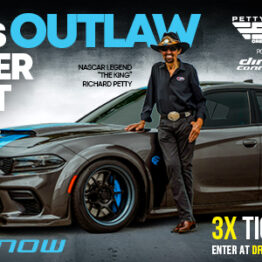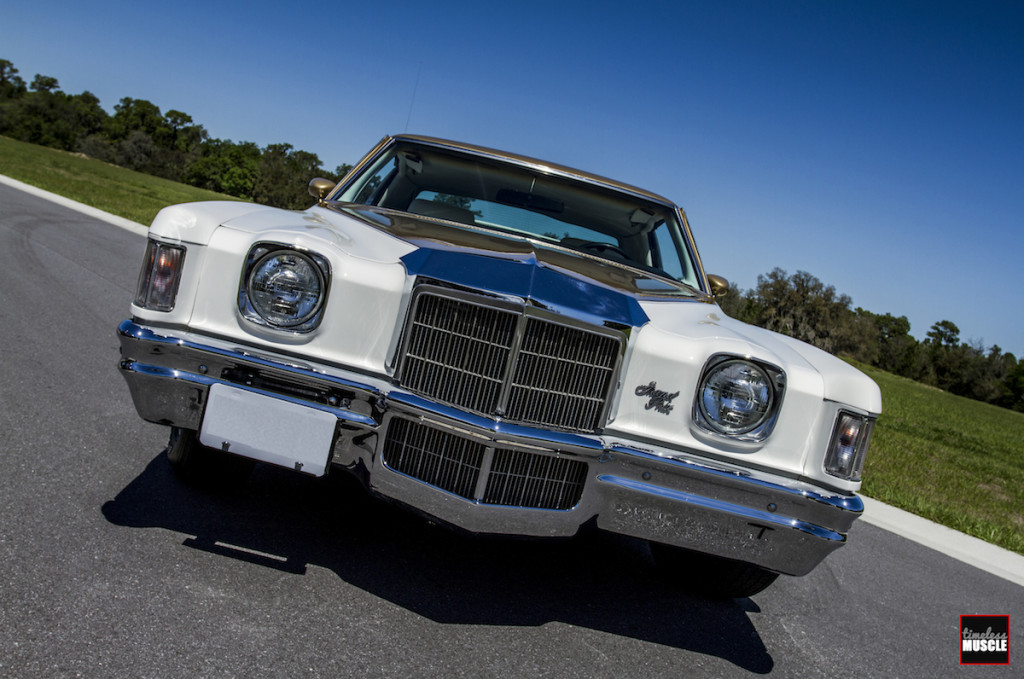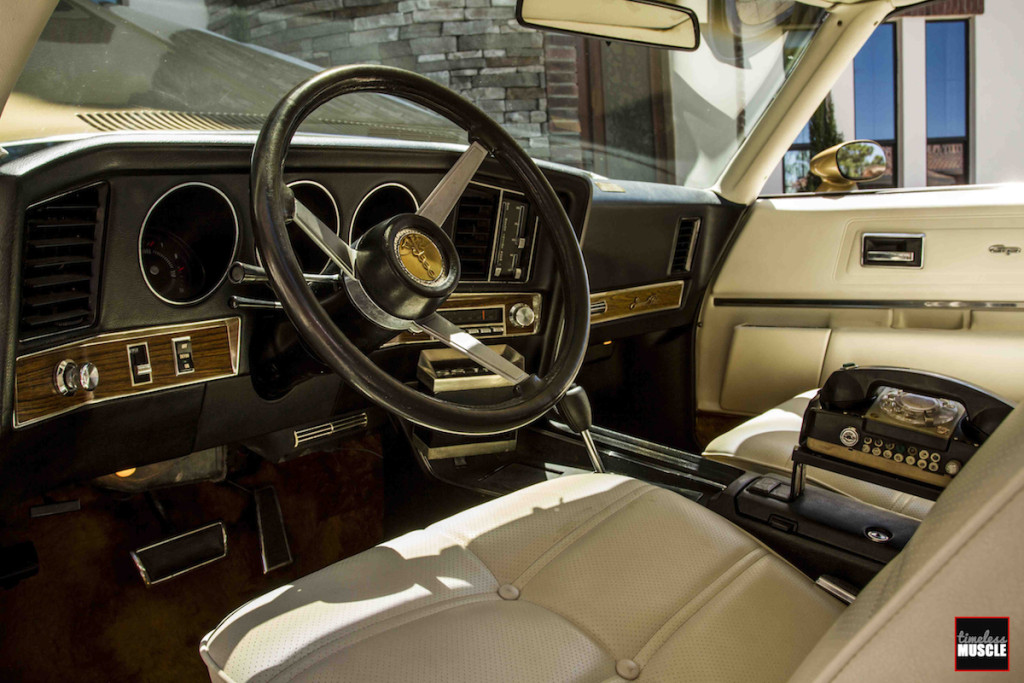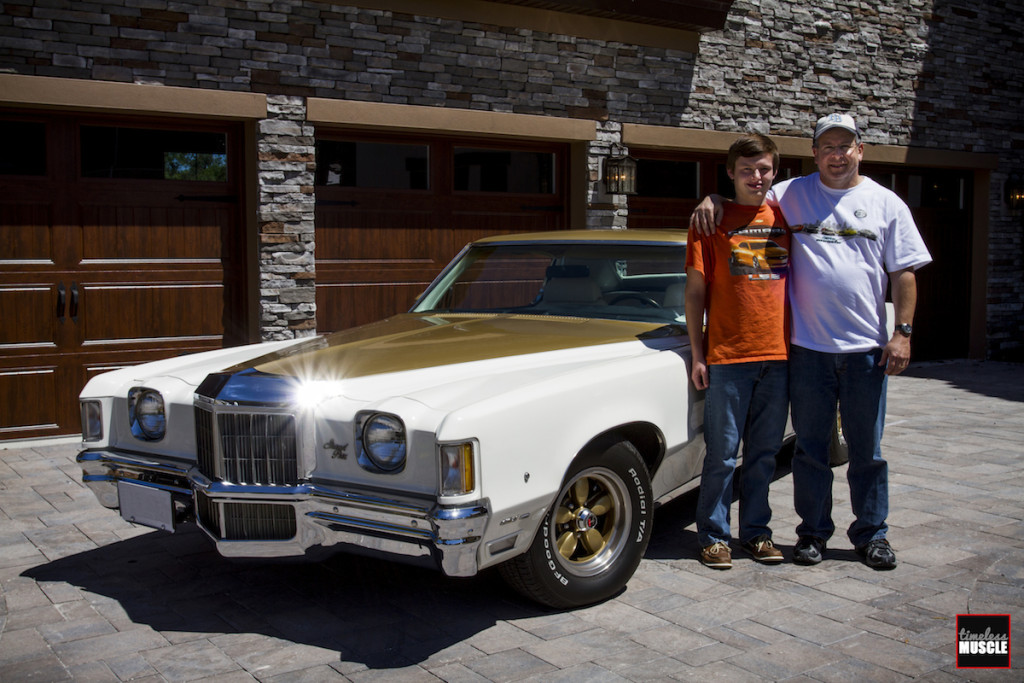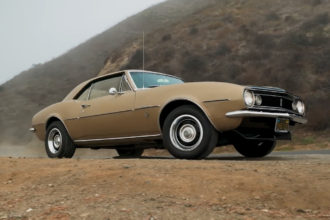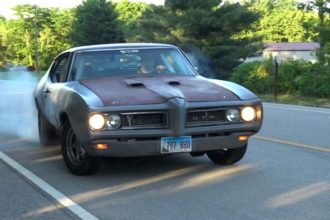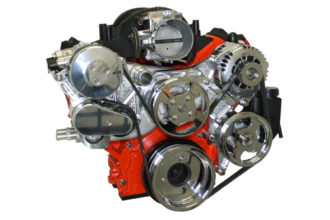*photos by: Casey J. Porter
While Hurst Performance’s automotive associations are often tied in with Oldsmobile 442 Cutlasses, the wider truth is that the Warminster, Pennsylvania, company supplied most major manufacturers of the ’60s with its shifters, and the company’s first foray into the mainstream automotive market was with Pontiac in 1961. By 1965, they were supplying wheels for the ’65 GTO, and that was the same year that they opened the Hurst Performance Center just outside of Detroit, where the company would put its own touches on vehicles from Chrysler, AMC, Jeep, Oldsmobile, and Pontiac. The ’72 Grand Prix you see here is one of those modified vehicles, but Hurst wasn’t the only company to get its hands on it.
Wisco, otherwise known as the Webasto International Sunroof Corporation, spent a lot of time modifying Cadillacs and other luxury brands. According to this Grand Prix’s current owner, Harvey Morris of Riverview, Florida, this is the only Hurst SSJ Grand Prix that Wisco ever modified.
“I haven’t come across another one yet, and I’ve been deep into the SSJs since 1986,” Harvey told us. And Harvey knows a thing or two about the Pontiac Grand Prix and the Hurst-modified ones in particular, as he and his brother, Larry, currently have two each. It was, in fact, Harvey’s brother that got him into Grand Prix to begin with.
“My brother had a ’72 when I was a kid,” Harvey recalled.” It kind of stuck in my mind and I’ve been a Pontiac nut ever since.” He came into possession of his first Grand Prix, a ’74 model, in 1981 during his senior year of high school. Several years later, Harvey would get his first exposure to an SSJ in 1986.
“I was at a stereo repair shop in Pittsburgh and the car just drove up with a fairly attractive blonde behind the wheel,” Harvey told us. “I ran out the door, and I was probably a little aggressive in my sales approach, but she decided to sell it to me, especially after begging.” Surely it’s not every day that you are asked to sell your car on the spot, but the owner decided to part with it as it was rusting out and had been sideswiped. A young Harvey expressed an interest in restoring it as well. Harvey owned that white-on-gold ’72 SSJ for seven years—no doubt showing the commitment to the Grand Prix—but it proved to be too big of a job for him. He also realized that he would never recoup the restoration cost if he ever sold it, and eventually parted ways with it in 1993.
Opting for something that needed no restoration work, Harvey picked up his second Hurst-edition Grand Prix in 1999. It, too, was a white-on-gold SSJ, but a ’71 model that was an all-original survivor car. When the eBay auction didn’t elicit one single bid, Harvey made the deal with the seller post-auction. Throughout his enjoyment of these cars, Harvey met a lot of fellow owners and enthusiasts that shared the same passion. One such owner was Dale Compton.
Dale was the owner of a ’72 Hurst Grand Prix, the very one you see on this page, and his car was extra special in that it had received the El Clásico treatment by Wisco. Dale was but the second owner of the car, the first of whom was Dr. Ira Potter of Kentucky.
The Hurst touch was not an inexpensive choice; just like at the dealership, Hurst had lots of option boxes that could escalate the sticker price quickly. According to pontiacsonline.com, the base SSJ conversion (For 1972) added $1,275 to the cost of your new Grand Prix, and there were enough options that could easily triple that if you checked them all. You also had to pick your car up at the Hurst Performance Center or pay to have it delivered. Dr. Potter was obviously doing well then to order his SSJ Grand Prix with a number of these options.
From the factory, Pontiac had equipped the Grand Prix with power windows and locks, power seat, electric seat-back locks, AM-FM stereo with 8-Track player, cornering lamps, tilt steering column, cruise control, power sunroof, padded sport wheel, courtesy light package, upgraded instrument package, and air conditioning with auto-temperature control. Oh, and there was the 455ci Pontiac V-8 thundering under the hood as well.

The Hurst Grand Prix could be had with both the 400ci and 455ci engines. This particular example shipped from Pontiac with the YA-code (unitized ignition), Rochester four-barrel-fed, 300hp 455.
From that point, Hurst took over for ten days, adding its gold paint package, Hurst Digital Computer by Harmon (Yes, a digital computer in 1972!), alarm system, Wheel Option: 3 (the American Racing aluminum wheels) and mobile telephone. That last addition to the Grand Prix cost $2,100 on its own (In 1972 money. -Ed.)!
While Wisco was known for hopping up Cadillacs, in the same building, they added several features to this Grand Prix that you’re not likely to see in a car these days short of a Rolls Royce. On the outside, Wisco added a half-top in vinyl adorned with Landau bars, as well as a chrome front panel at the end of the hood. Inside, there was a plush carpet upgrade (’70s shag all the way!) as well as a wet bar and refrigerator—either Dr. Potter made a lot of house calls and liked to take his lunch with him, or he was just making bank and wanted something unique to show it.
Production figures for the three years of Hurst Grand Prix production are relatively low. Just 272 were built in 1970 when Hurst was starting with Polar White or Starlight Black J or SJ models (1970 was the only year of the 3 where an SJ could have been converted through normal ordering channels). As Hurst struggled to market this model effectively, production of the Hurst Grand Prix for 1971 fell to 157 cars. The final Hurst Grand Prix production year would be 1972, and for a long time, it was thought that just 60 examples found their way into enthusiast hands based on an interview with a former Hurst employee. Harvey suggests that there were far more, citing an interview with former Hurst plant manager, Larry Knox, who said he expected to sell more than 350. A rare document in Harvey’s collection states that Hurst earned $90,168 in sales of the 1972 Pontiac SSJ program, with $26,767 of that being profit.
Given that Hurst opened up the 1972 production to Grand Prix of other colors through customer order, dealer order, or “drive through” (and not just J models as previously had been the case), the idea that more than 60 were produced that year is plausible. Jim Mattison of Pontiac Historical Services is of the opinion that there were more than just 60 as well. Whatever the final tally was, it’s still a relatively low number of vehicles, and when you add in the El Clásico modifications, Harvey’s Hurst Grand Prix is likely the most heavily optioned and rarest of them all.
According to Harvey, it’s his understanding that Hurst would allow customers to buy their GP off the dealer lot and then receive the car as a “drive through.” His El Clásico may be the only GP that started off as a 1972 SJ (SJ emblem holes are still in the fenders and Hurst used their emblems to cover the holes) off the lot to be given the Hurst conversion, despite the fact that the 71’s and 72’s were supposedly required to be model Js per normal ordering instructions.
In any case, Dr. Potter eventually parted ways with the car. The house calls scenario wouldn’t seem to be the case, given that the car currently has just 61,000 miles on the clock. Dale Compton became the second owner, and when he passed away, his son called up Harvey to see if he was interested in purchasing the Grand Prix. A deal was struck, and Harvey picked up the Hurst/El Clásico Grand Prix in February of 2014.
It’s safe to say it will likely remain with Harvey for some time, as he and his brother are both avid Hurst Grand Prix enthusiasts. Harvey’s brother, Larry, owns two Hurst GPs—one in black and gold, and one in green and gold. The latter is a one-of-one (optioned), PHS-documented car and quite possibly the second-most rare Hurst Grand Prix.
For those interested in obtaining a Hurst Grand Prix of their own, these rare cars are growing in price.
“I think the market is quite strong,” Harvey told us. “It would require a special buyer, but they’re out there. Low-mileage, decent cars and restored cars can pull $30,000 or more.” For more information on this rare breed, visit www.pontiacsonline.com.

A Hurst Grand Prix offered three options when it came to the wheels. All of the GPs headed to Hurst wearing Rally II steel wheels, but you could order 14- or 15-inch American Racing 200S “coke bottle” wheels in combos of 4 or 5, 14- and 15-inch Cragar SS wheels in combos of 4 or 5, or go with Pontiac’s honeycomb wheels.

While Harvey’s Hurst/El Clásico ride is well optioned, there were a few that the original owner did not check off. Since he had chosen the bucket seat option, he wasn’t able to take advantage of the Hurst Auto/Stick shifter—console cars simply retained the stock shifter. He also passed on the Sony TV-940 black and white television set with external Sony VCA-1 antenna.

Wisco was responsible for adorning the Grand Prix with the vinyl roof with limousine-style rear window. They added the Landau bars on the sail panels and the chrome-plated nose cap on the hood for added touches of elegance.

There was no texting in 1972, but we suspect trying to dial on a rotary-dial phone was equally as distracting. Perhaps the key lock used the ignition key to prevent this. Despite its ancient looks, this was state-of-the-art for 1972. The phone is an Automatic Electric unit that later became GTE which morphed into today’s Verizon. The phone transmitted on the airwaves via the old Bell System, and Symetrics of Florida supplied the entire phone system.

Cleverly hidden in the back seat was a wood-grain wet bar with bottle storage, and a 12V- or 120V-powered refrigerator. It would surely make long trips much nicer, and frankly, these options still aren’t that available in today’s cars
Steve Baur is the founder and principal of Driven Media Works, a Florida-based creative-services firm serving the automotive aftermarket. After attending the University of South Florida for journalism, Steve signed on with Muscle Mustangs & Fast Fords magazine, where he served as associate editor and, later, technical editor during his nine-year tenure. In 2010, he was promoted to the editorship of Modified Mustangs & Fords, a publication he helmed for four years before launching Driven Media Works in 2014. A lover of all things automotive, Steve has contributed to a wide range of motoring publications, including Car Craft, Truckin’, Modified, Super Chevy, Race Pages, GM High Tech Performance, and High Performance Pontiac. In addition to his freelance work, Steve is currently editor of Fastest Street Car magazine which covers the NMCA racing series.

